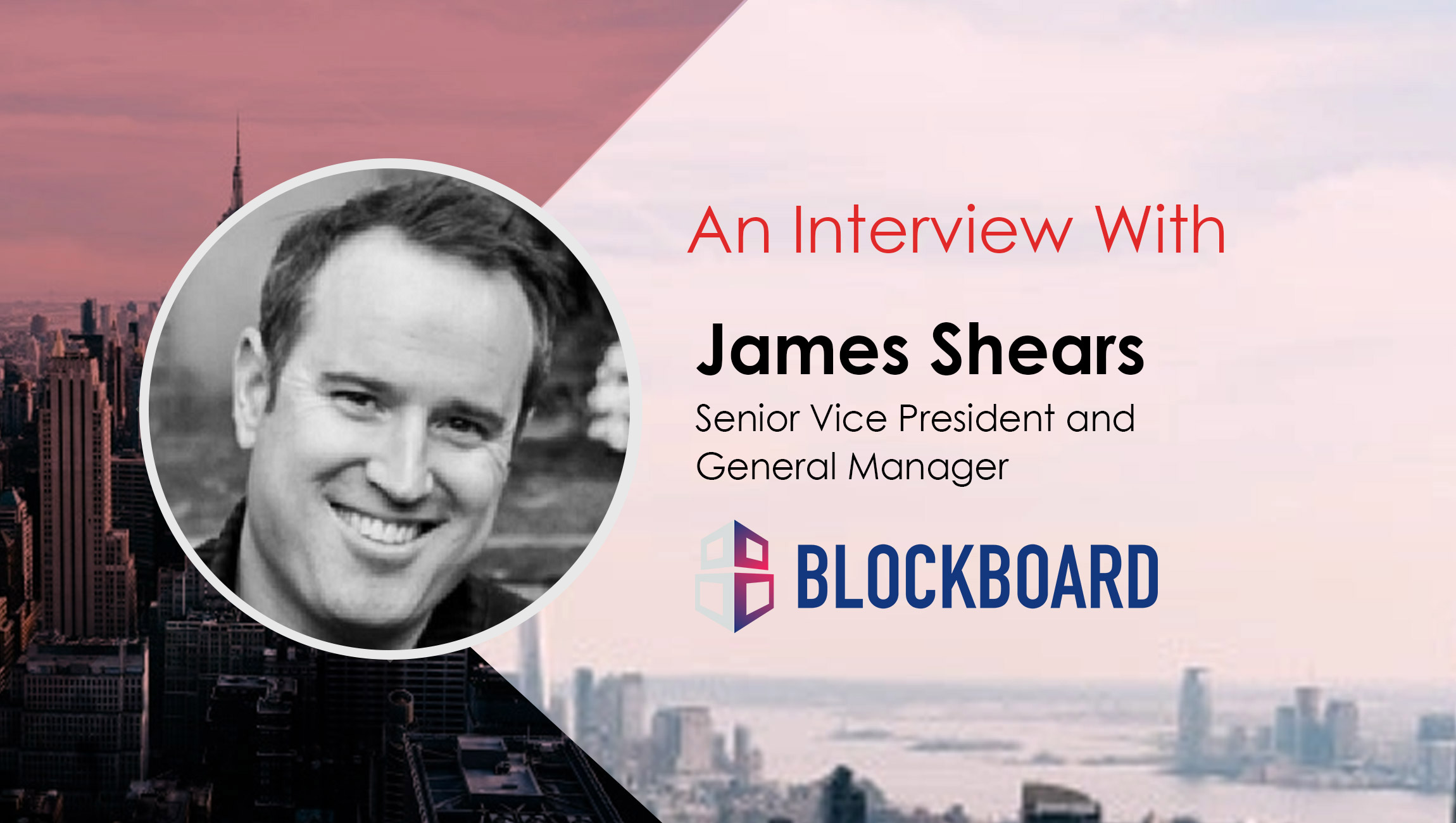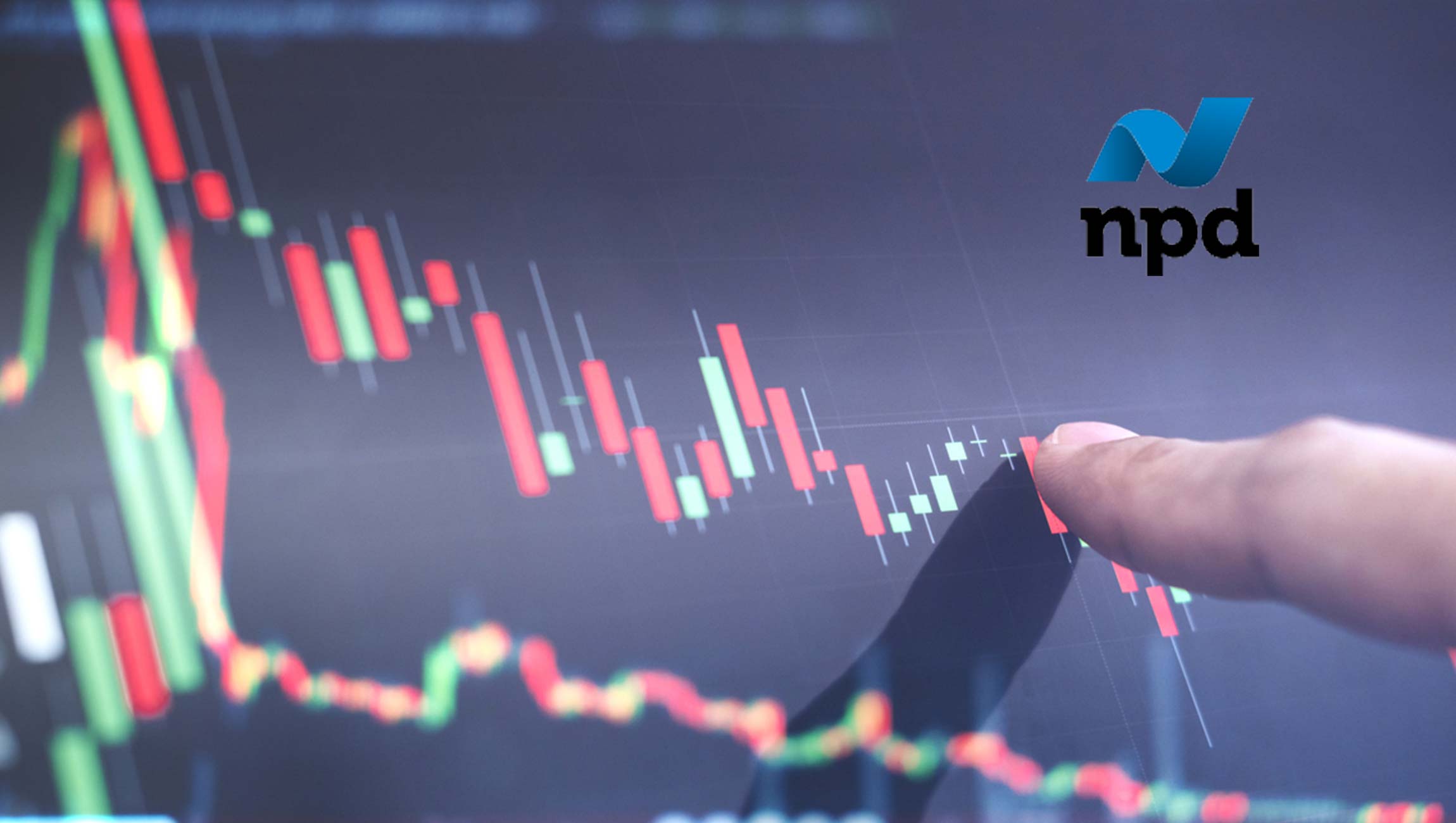James Shears, Senior Vice President and General Manager at BLOCKBOARD shares a few thoughts on the future of programmatic adtech in this short Q&A:
_______
Welcome to this MarTech Series chat, James, tell us about yourself and your role at BLOCKBOARD…
I’ve been in and around the adtech space for decades, primarily focused on activation, data and technology. What drove me to join Blockboard was the company’s continued efforts to push the envelope when it comes to innovation. My role is focused on our new, self-service platform designed to give clients a hands-on experience that empowers real-time business decisions and drives key results. This new offering provides advertisers with a flexible, agnostic ecosystem built on efficiency and transparency.
Innovation is our foundation at Blockboard. We are bringing a new approach that leverages blockchain technology and unique pre-verification philosophies to address some of the most pressing challenges in our market.
What are some of the prominent digital ad practices and trends you’re seeing in today’s marketplace?
To no one’s surprise, data continues to be incredibly important within any marketing strategy. Though some would argue that’s the start of your journey or campaign, really, the most critical part of any campaign is the end result. Marketers need to know what the end goal or KPI is that they want to measure and achieve before they start the planning process. This is one of the most important factors that we ask our clients at the start of a campaign to help deliver the best results.
Sticking with data, the other key digital advertising practice is third-party versus first-party data. While marketers have become increasingly comfortable with how to apply third-party data to their campaigns, first-party data feels like it is still in the early stages. I say that because a lot of marketers are still working through how to structure their first-party data and how to incorporate the architecture needed to support that strategy.
In terms of trends, the continued migration of both viewers and ad dollars to streaming doesn’t seem to be slowing down. CTV, in particular, continues to increase and even more specifically, Free Ad supported Streaming TV (FAST) continues to grow and the new players in the space are some of the largest companies in the world – Disney, Netflix, Amazon, etc. As a result, Marketers are trying to push even larger portions of budgets to these mediums. This streaming migration is exacerbating the need for new tools that measure attribution and outcome-based results. It’s important for marketers to know what they are looking to achieve before activating specific partnerships.
Lastly, the unfortunate trend of waste continues, especially in CTV – and I use “waste” purposefully. While fraud proliferates the ad market, manipulating ad impressions and creating an unsustainable environment for advertisers – there are also workflow or technical challenges. Advertisers are faced with the question of proper targeting, frequency management and even measurement challenges (when should impressions actually be counted). These measurement challenges and lack of transparency are exactly what we’re solving at Blockboard.
Marketing Technology News: MarTech Interview with Liz Carter, CMO at Reputation
How can programmatic DSPs benefit advertisers and what are some thoughts you’d like to share on the future of this space?
The main benefits for advertisers in today’s environment are still similar to what they’ve been for a number of years. Which is mainly efficient workflows, automation, and the ecosystem of media inventory and data. The promise and most important benefit for the advertiser, however, should be the ecosystem offered by the platform. A good DSP helps decision media. What that means is that the platform applies data in an optimal way, selects inventory based on that criteria, and places a bid in an auction. The advertiser can then strategize within the DSP and make changes to purchases to help drive specific goals and KPIs. To effectively manage ad campaigns, marketers should look into the level of reporting provided by their DSP. This will enable advertisers to make informed, real-time decisions either for a specific campaign or for larger business decisions.
Today, the DSP space is in the midst of a transformation. We are evolving from online advertising or what we like to call, “programmatic 1.0,” into the next generation of advertising, or “programmatic 2.0.” The programmatic 2.0 era will be focused on even greater efficiencies, transparency, fraud mitigation, stronger connections between brands and consumers, and tighter controls around the marketing funnel. To do that, technology will evolve and data architecture will develop that more tightly connects the entire ecosystem.
What are some of the ways for advertisers to reduce the impact of ad frauds?
The unfortunate answer right now, as it relates to fraud, is that it exists and in some cases is quite prevalent. While there is no true foolproof solution to eliminate fraud all together, it’s important that we realize the best course of action is to take mitigating steps to reduce what you see currently.
It sounds simplistic, but the first thing you should do as a marketer is understand what you are actually buying. The second piece is understanding the platforms that you may be using. How does that platform surface inventory? Do direct deals exist and supply sources that are curated? Is there a third-party aggregator being leveraged? It is important to know how the transaction of inventory actually happens. The more hands in the pot, or more vendors in the middle of the advertiser and the inventory, the greater chance there is for fraud and/or waste.
At Blockboard, we believe in the importance of pre-verification. While a lot of analysis happens after the fact on a post-campaign basis, the reality is, not a lot of that info is actionable. Yes, it can help to inform buys for the next time around, but it’s not easily filtered on the front end. We have spent the time to develop and implement pre-verification to ensure all impressions are accurate and zero of the media spend goes to waste.
What do you feel about the current state of CTV and its impact today?
It is an overused term, but it really is the Golden Age of television. It’s also an incredibly exciting time for CTV. There is an enormous amount of content and the audience numbers only continue to grow. With new ad formats, new e-commerce opportunities, QR codes, and pod lengths, we can only predict that there is more innovation in the works that hasn’t come to the surface yet.
CTV is TV with a digital connection. That means marketers can learn even more about their consumers through a deeper exchange of data. Privacy, of course, is still paramount, but advertisers have direct access to this data and can optimize it for future campaigns. This data could be the engagement of the ad itself, which could provide insights into the specific piece of creative. It could lead to understanding how the placement of ads benefits or creates a disadvantage for the advertiser, resulting in new optimization techniques. And lastly, it provides a more direct line to certain points of attribution.
CTV can and should be a main driver of your marketing campaign. It can help with brand awareness initially but, more importantly, help drive your consumers down the marketing funnel.
Marketing Technology News: 4 Techniques to Track and Optimize Digital Marketing ROI
How can blockchain benefit the overall ad marketplace and what predictions do you have for the space?
At Blockboard, we fundamentally believe in transparency–and that’s why we leverage blockchain technology. An oversimplified description of blockchain is that it is a public digital ledger where each result is recorded, and by utilizing this a digital agreement is made between two parties. In the ad marketplace, that can be the parameters of a campaign or even an insertion order. As the campaign is fulfilled, delivery results are recorded on the blockchain one by one, giving the advertiser transparent, real-time results.
That is our first utilization of the blockchain: clear transparent reporting. That may not sound like much given all the reporting tools that are out there today, but the difference here is that the blockchain is immutable. That means the blockchain cannot be changed and you can transparently see what happened and when. With that, we can begin to think differently about measurement in its current form.
Transparency is the tip of the iceberg and the marriage of blockchain and advertising has only just begun. We believe in the principles of web3 and know that they allow for much deeper connections between brands and audiences, empower advertisers with true value exchange of data and management capabilities, and perhaps even creative.
The true benefit of the blockchain is that it will allow the industry to begin to actually answer the real challenges we face. Innovation will continue to drive us forward.
Five prominent trends you feel will dominate the ad market in the near-term.
- The single biggest trend will be privacy regulation. Companies will start to employ new technology, architecture and strategy to adapt to the next generation of advertising.
- Contextual targeting will become increasingly relevant, likey to the level of practice that exists in Europe. Europe leans heavily on contextual targeting as they cannot use IP addresses and we anticipate the US will follow suit if regulation persists.
- AI and machine learning will play an even greater role in our space. With the prevalence of devices, content and data, technology will become even more important when managing campaigns.
- CTV ad pods will start to look different due to the attention of the audience changing. We are moving into a world that looks much different than the broadcast television days.
- E-commerce grows exponentially as it relates to marketing. I think clickable ads like QR codes and interactive units, will become more widely used on devices like television.

BLOCKBOARD is a programmatic 2.0 platform that leverages blockchain technology to pre-verify every ad call, vet each impression and ensure truthful, no-waste results for each campaign. The company was built on Web3 principles for the next era of digital advertising and to combat fraud in the market by bringing confidence, transparency and truthful, performance-driven results to CTV/OTT advertisers. James joined BLOCKBOARD to lead the go-to-market strategy for the company’s platform-as-a-service offering and is responsible for business development, and the immediate and future needs of all advertising clients at BLOCKBOARD.
James Shears is Senior Vice President and General Manager at BLOCKBOARD.
Missed The Latest Episode of The SalesStar Podcast? Have a quick listen here!
Episode 146: The Bazaarvoice Growth Story with Zarina Stanford, CMO at Bazaarvoice
Episode 145: The Changing Face of Sales with Mark Wright, VP Sales & Partnerships at Zeitworks
Episode 144: What Drives Better B2B Performance: with Rachel Clap Miller – VP of Marketing and Digital Engagement at Ascender by Force Management











